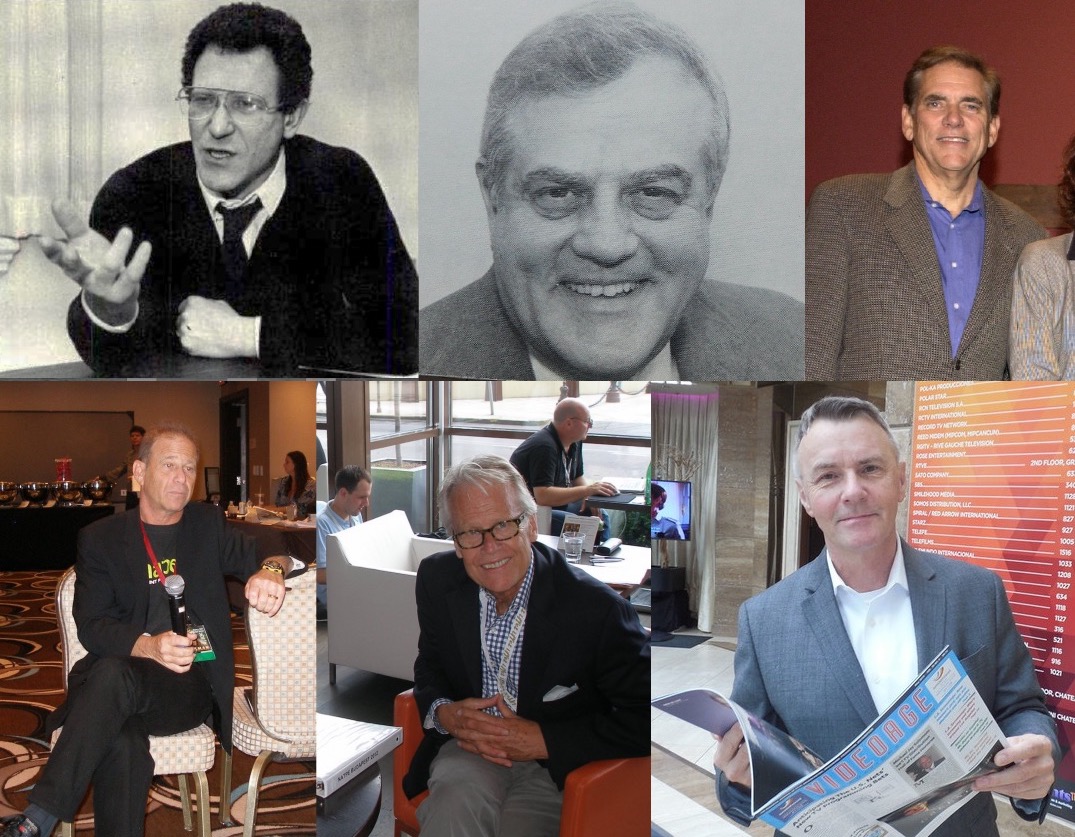The international TV industry is now witnessing the disappearance of the National Association of Television Program Executives (NATPE) as we know it. NATPE was born in New York City in 1963, and filed for bankruptcy in 2022, at age 59.
The year 1963 also saw the births of MIP-TV in France, the Monte Carlo TV Festival, as well as MIFED in Italy. (The Italian market died in 2008.)
NATPE’s demise has been attributed to the pandemic since it forced the cancellation of its markets in 2021 and 2022, but thus far, it is the only TV market to fall prey to COVID. Other issues, yet to be revealed, must therefore be responsible for its untimely demise. But we should first analyze NATPE’s tormented past, which alternated between feast and famine.
My first NATPE market was in 1979 in Las Vegas. It was also the seventh market staged by the organization, and I was representing the (now defunct) trade journal Television/RadioAge. My last NATPE — and the organization’s final TV market — took place in 2020 in Miami Beach, and I attended as the editor-in-chief of VideoAge International (the publication that I founded in 1981).
NATPE started as a conference-focused organization; it wasn’t until its 1971 event in Houston that distributors and “program packagers” became a part of the marketplace. The following year, at the NATPE convention in San Francisco, it was reported that MCA-TV did $20 million worth of syndication business in its hotel suite. And in a 1973 piece about the convention in New Orleans, a headline from the February 12 edition of Broadcasting magazine read, “The NATPE conference: Rival to the NAB as the program marketplace?”
In the 42 years since my first NATPE, I followed the NATPE caravan every year, whether it was to San Francisco, New York City, Houston, New Orleans, Las Vegas, or Miami Beach.
I say “caravan” because the market had the feel of a circus, with the show business aspect on full display. There were enormous stands, extravagant parties, and parades of TV stars. There were exceptions, of course, such as when the “show business” inside the event turned into something more akin to “shoe business” (i.e., devoid of any glamour) for reasons related to the 2007-2009 recession, the changing nature of the business (such as the elimination of the Fin-Syn rule in 1993), a major Los Angeles earthquake (just before the start of NATPE 1994), terrorism in 2001, and wars (the Gulf Wars, 1990 and 2003). This also occasionally happened because of NATPE’s own shortcomings some years, like 1990, when it inexplicably banned food and live demonstrations.
During its almost half-century of existence, NATPE has been headed by six executives: George Back (1979-1982), Phil Corvo (1983-1993), Bruce Johansen (1994-2002), Rick Feldman (2003-2012), Rod Perth (2013-2015), and JP Bommel (2016-2022).
As the first executive director, Back recalled that NATPE’s main challenge in 1980 was to persuade exhibitors to leave the hotel suite set-up for open spaces. “We were looking to replicate the MIP-TV stand approach,” he said, before adding that he eventually resigned in order to accept a position as president of All American Television, a distribution company. Back did, however, remain on the NATPE board.
Phil Corvo, a former U.S. TV station program director, was cold to VideoAge because of its international focus. After all, NATPE was a U.S. — better yet — domestic syndication market, and international was seen as interference. However, at some point in 1995, NATPE added “International” to its name and became NATPE International. It later became NATPE Market, and then NATPE Content First.
David Simon, who served as president of NATPE in 1986-87 recalled that, after his term, the title of president was changed to chairman, while the day-to-day operations were left to the executive director, which later became the association’s president.
Under the stewardship of Bruce Johansen (Corvo resigned for health reasons), who came from an international TV sales background at Multimedia, NATPE went through its first crisis, which was caused by three interconnected elements. First was the elimination of Fin-Syn, which effectively brought about the end of the syndication business (and the related creation of large station groups). Second was NATPE’s penchant for selling large exhibition spaces, which later on became unpopular with domestic syndicators, as well as international distributors. The large exhibition stands were no longer needed after the elimination of Fin-Syn. When NATPE was in New Orleans, the Convention Center measured 1.6 kilometers in length. Participants used to wear step counters to measure their daily treks, and large stands like that of Paramount used to have a restaurant to feed 1,500 participants a day for lunch. And third was NATPE’s tendency toward extravagant expenditures.
NATPE’s financials weren’t completely bad, but the writing was on the wall, and Johansen reportedly decided to leave before the roof collapsed (or because of a confrontation with a NATPE board member). After leaving in 2003 he never again attended any NATPE gathering.
During a phone call to VideoAge from his Palm Springs, California, residence, Johansen said that he left NATPE with $11 million in the bank, and leaving the association had nothing to do with his disagreement with a NATPE board member.
Rick Feldman was called in to revamp NATPE’s prospects. A former U.S. TV station manager, Feldman was the one who, in 2004, brought the event back to Las Vegas, and returned the market it to its original hotel suite nature (with a reduced floor exhibition for distributors who favored small stands).
The change to Vegas went smoothly for three years, but it started losing steam in 2008. The reason? The market had taken on a Latin American focus and the Latins were losing interest in the Vegas venue due to the fact that it was difficult for them to reach it by air.
At that point VideoAge incurred the ire of Feldman because, back in 2002, the publication had begun lobbying NATPE to move its event to Miami, Florida. NATPE was eventually able to get out of long-term contractual obligations with the Las Vegas hotels, and in 2011 moved to Miami. During the starting press conference in Miami Beach, Feldman stated that if the move didn’t prove to be successful, the blame was to be laid squarely on VideoAge’s shoulders. The concern wasn’t totally unfounded since Miami Beach had left a bad impression on attendees and organizers due to the poor service received from the local workforce during the 1994 event, which had been held at the city’s Convention Center and at the Fontainebleau Hotel (which hadn’t been renovated at that time).
Luckily, the move was a success and it improved NATPE’s finances, but it also led to the replacement of Feldman four years later in favor of Rod Perth, a U.S. TV executive with a varied resume.
Perth’s tenure at the helm of NATPE was short lived (officially for health reasons), and in 2016 he was replaced with JP Bommel, a former executive at Reed MIDEM (now RX France, the organizer of MIP-TV and MIPCOM). Feldman expanded on his dismissal on Page 30. (Perth, on the other hand, didn’t reply when asked to comment on his tenure.)
NATPE continued to prosper up until COVID, when it canceled its in-person Miami events in 2021 and 2022, and for financial reasons, its Bahamas event in 2023.
After the January 2022 market cancellation, the situation at NATPE unraveled rather quickly. The move to the Bahamas was unpopular with the TV industry, and it is unclear why the location was chosen over Miami (although the official reason was to save money). The change of venue was revealed by VideoAge in its December 2021 Issue, but wasn’t officially confirmed until June 28, 2022. Then, 96 days later, on October 3, NATPE announced in a press release that it would be filing for Chapter 11 bankruptcy protection, and 23 days later, it canceled the Bahamas event (the actual bankruptcy filing was on October 11, 2022).
In mid-November 2022, it was revealed that seven companies had expressed an interest in bidding for NATPE’s assets, but a few days later, on November 21, the Fontainebleau filed an objection with the bankruptcy court, asserting that NATPE (which, they claimed, owed the hotel more than $3.41 million) had left the hotel out of the discussions.
It is clear that even if NATPE made some money with its 2021 virtual events, the pandemic drastically reduced its reserves. (The 2020 market had caused some grumbling among participants when the computers at the Fontainebleau were reportedly hacked during the market’s hotel check-in portion, but NATPE was able to monetize the incident by reportedly getting some $500,000 refunded from the hotel.)
The 2022 in-person mart cancellation, however, was the blow that finally felled NATPE. It was unexpected and, in some ways, unnecessary, considering two previously successful in-person events: MIPCOM in October 2021 and MIP Cancun the following month. Apparently, after learning of some exhibitor defections, NATPE’s management resolved that the cancellation fee to be paid to the hotel was going to be lower than the cost of running the event, especially considering its high food and beverage commitment to the hotel. However, NATPE later reportedly opposed the cancellation fee for “force majeure” reasons (i.e., COVID). It is also unclear if NATPE had by then kept its cancellation insurance policy. The premium reportedly reached $70,000 a year.
According to NATPE’s filings with the U.S. Bankruptcy court, as of September 30, 2022, the organization reported $518,548 in cash and $326,072 in investments. Prior to March 31, 2022, it had total cash and investments of $2.5 million. As the same time liabilities were shown to be $1.2 million as of September 30, 2022. This compares to $1.5 million as per March 31, 2022.
Reportedly, exhibitors who had paid in advance would have been given credits towards the January 2023 event, but that was also canceled. However, NATPE’s court filing does not reflect the separate $3.41 million dispute with the Fontainebleau Hotel.
On January 4, 2023, the Toronto, Canada-based company Brunico Communications announced to have acquired the assets of NATPE, which include the brand, and its content markets, conferences and events. According to the release, “Starting with NATPE Budapest from June 26-28 [2023] at the InterContinental Hotel, NATPE will see a full-scale return of its annual slate of events culminating in early 2024 with NATPE Global.”
Dick Lippin, chairman of the Los Angeles-based PR firm, The Lippin Group, and on the executive board of NATPE, commented: “NATPE was a great organization for many, many years. It is unfortunate and sad that the onset of COVID and an ever-changing industry has resulted in the position it is in today.” The Lippin Group has been NATPE media and PR representative since in the mid 1990s.
Added Andy Kaplan, chairman of the Los Angeles-based KC Global Media Entertainment and NATPE chairman: “The multi-decade legacy that NATPE has forged is unmatched. The future of content has never been brighter and NATPE’s place in that future has never been more exciting.”
(By Dom Serafini)
Audio Version (a DV Works service)










Leave A Comment